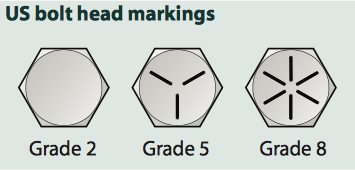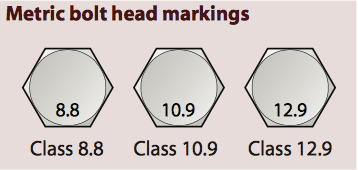Cargo Control Terms

- Standard Handle (Ratchet) means that the handle is the same width as the ratchet sides, the top of the handle does not flare or widen out.
- High Profile or under mount winch means the winch is located below the trailer side and side rail, perpendicular to the trailer deck.
- Low Profile or side mount winch means the winch is affixed to the trailer side or rated side rail, parallel to the trailer deck.
- Shoring is the vertical, angled, or horizontal bracing during transportation supporting the product or load being transported and the transport vehicle.
- Decking is the creation of horizontal framework within a transport vehicle that creates a shipping surface or area separate from the primary shipping surface.
- Angle of Friction (Repose) is the maximum angle at which an object can rest on an inclined plane without sliding. The tangent of the angle of friction is the Coefficient of Friction.
- Coefficient of Friction is the relationship between the force resisting material elements from sliding against one another and the normal force between the objects.
- Gravity is a force that pulls two objects toward each other. The more mass an object has, the stronger its gravitational pull. This force keeps you on the ground and causes objects to fall.
- Force is a push or pull upon an object resulting from the object's interaction with another object.
-
Did You Know?
Current designs of Aluminum Flat Bed Trailers tend to bend & flex as they travel down the road creating slack in chains and straps requiring more frequent re-tightening and causing premature tie down wear. - Putting a half twist on the hardware side of a flat bed strap can limit the 'flutter burn' caused when straps are inadequately tightened and vehicles reach highway speeds. It is not uncommon for straps that are affixed, go up, over and down the load to be difficult to fully tighten, UNLESS PROPERLY DESIGNED CORNER GUARDS are utilized. This half twist can prevent premature strap wear at the point above the hardware where the strap comes in contact with the vehicle. Please contact RatchetStrap.com with any questions!
- Trucking is the dominant mode of domestic freight transportation in the United States. It is divided between for-hire trucking, composed of long-haul and regional truckload carriers and less-than-truckload carriers, and private, shipper-owned fleets. Smaller, niche operators include drayage truckers that haul intermodal containers from rail yards and seaports, and flatbed companies that handle heavy freight.
Top Myths & Misrepresentations Regarding Cargo Control & Load Restraints
Exposed below in a True or False Quiz, are some Myths, Mis-truths or Misrepresentations recently heard regarding the correct use and implementation of load restraints & tie downs:
TRUE or FALSE?
1) Webbing Straps and Assemblies MUST have the Working Load Limit Stenciled on The Webbing? T or F
Reasoning - ( Everyone’s doing it, it must be the law. )
Answer = FALSE! The TAG is the proper ( and only ) place Working Load Limit is listed.
2) The Department of Transportation ( DOT ) APPROVES Strap Assemblies? T or F
Reasoning - ( C’mon, we’ve all heard the term, “DOT-Approved”. )
Answer = FALSE! Neither the US nor Canada is in the business of exclusiveness, 'approving' brand 'X' over brand 'Y'.
3) CHP or the California Highway Patrol RATES Strap Assemblies? T or F
Reasoning - ( CHP-Rated can be found on several industry websites & catalogs. )
Answer = FALSE! The CHP Strap rating, which discounted stated Working Load Limits to 80% of their published values ceased to exist over a decade ago.
4) Rubber Tarp Straps REQUIRE an embossed Working Load Limit? T or F
Reasoning - ( I’ve ‘bungied’ my folded up tarp to the trailer bed, we’re all good. )
Answer = FALSE! Tarp Straps are NOT able to be Rated due to Material Selection. If a Working Load Limit is on a tarp strap you own, it’s false & misleading.
5) Transport or Tie down Chains Assemblies REQUIRE a Metal Tag to be Legal? T or F
Reasoning - ( Chains are metal, tie downs require a tag, therefore, chains require a metal tag. )
Answer = FALSE! Yes, Chains are metal but there are industry-accepted identification schemes more widely known and accepted than tags that could be altered or falsified.
6) Hardware MUST Have the Working Load Limit Stamped On it to be Legal? T or F
Reasoning - ( Load Securements are only as strong as their weakest components )
Answer = False! It is true that assemblies are only as strong as their weakest component but in this case, hardware MUST be properly pull tested WITHIN AN ASSEMBLY in order to establish the Working Load Limit of any particular assembly.
7) The Nationwide Big Box Retailer is selling it, it MUST be Heavy Duty or Good Quality. T or F
Reasoning - ( Big Box Stores are huge, publicly-traded companies, their Buyers must know what they are doing)
Answer = False! These Nationwide Chains and Big Box Retailers should stick with selling nails, wheel barrows and Febreeze Carpet Stain Remover. Real Safety Equipment like the Heavy Duty, RatchetStrap.com™ Tie Downs can last years with proper maintenance. Import Brand 'X' from the Big Box Store is lucky not to be damaged when cutting open the theft-resistant, retail packaging.
Bolt Grade and Class for Strength Indication:
The Grade in the US or Class (Import) refers to the mechanical properties of the material used to manufacture the bolt and nut. Generally, a higher number indicates a stronger, hardened fastener (and generally a higher number can be more brittle). Manufacturers of load control products must keep in mind foreseeable stresses products may encounter and optimize the bolt for material choice, diameter and sheer strength. For most products, RatchetStrap.com specifies medium carbon steel alloy bolts and nuts (Grade 8). While this adds to our products' ultimate cost, it provides the most favorable result of high strength performance for expected and foreseeable use.


It is very important to note that when formed by a process called Upset Forging, the Head of the Bolt must also have the Bolt Manufacturer's name, logo or marking in addition to the markings pictured above. The Department of Energy publishes a list of Suspect or Counterfeit Fasteners that are banned for use on DOE projects and property. This list of disapproved Suspect or Counterfeit DOE-Headmarks can be found by clicking here.
